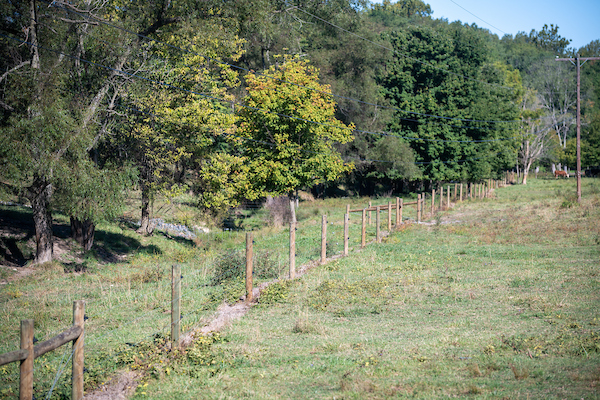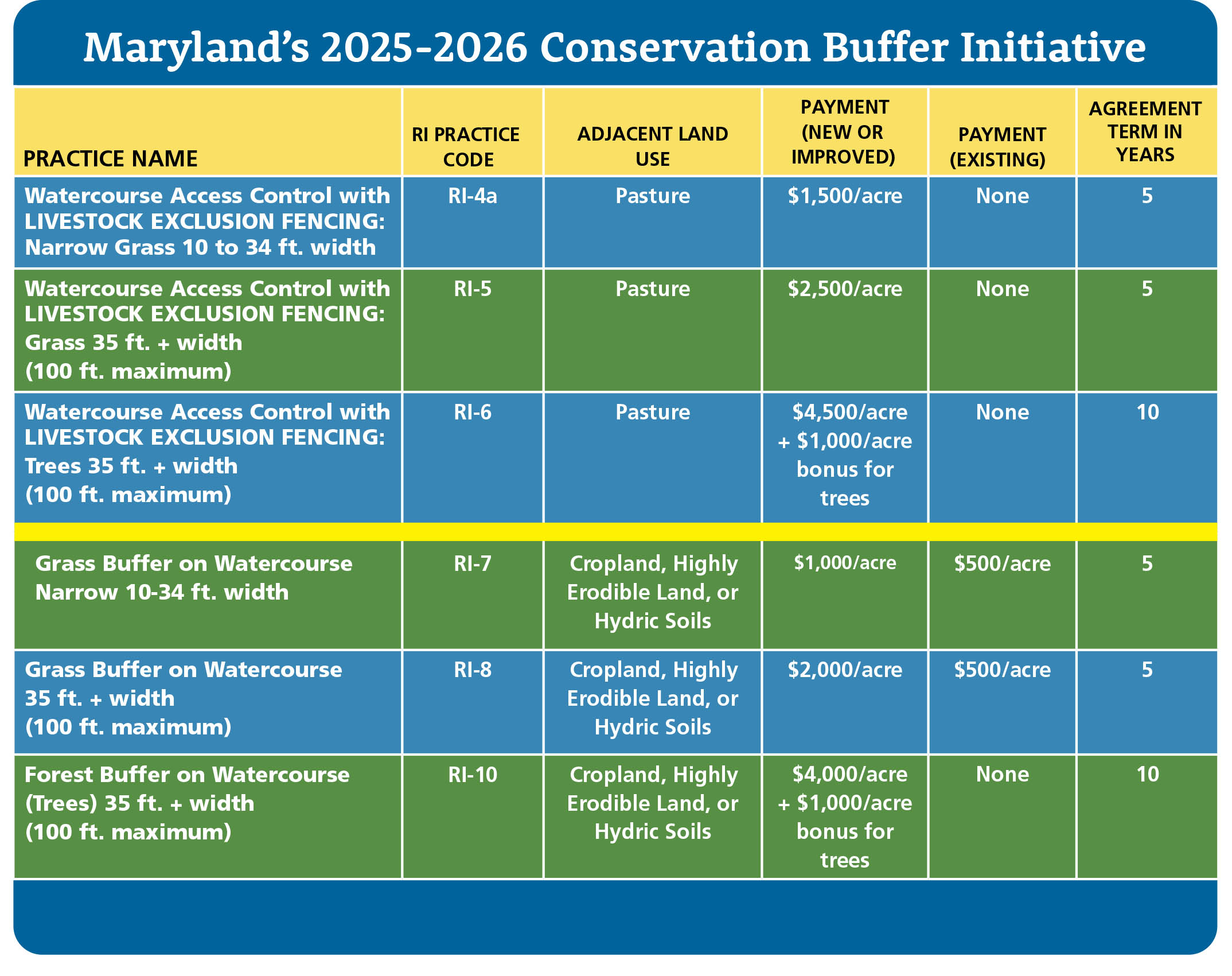Maryland's Conservation Buffer Initiative
Main_Content
 Maryland's 2025-2026 Conservation Buffer Initiative
Maryland's 2025-2026 Conservation Buffer Initiative
Opens November 1
Now in its 6th year, Maryland's Conservation Buffer Initiative provides farmers with attractive incentive payments to plant streamside buffers on farmland to improve the health of local streams and the Chesapeake Bay. This program can help you turn marginal land next to streams or floodplains into a valuable asset for both your farm and local water quality. Applications for this year's program will be accepted from November 1, 2025 through April 30, 2026. Check out our payment options:

ADDITIONAL TREE PLANTING INCENTIVES ARE STILL AVAILABLE
Incentives to plant riparian forest buffers are available again this year. These payments are on top of the $4,000 or $4,500 per acre offered for installation. To encourage more tree planting, the new incentives include:
- A one-time bonus payment for trees of $1,000 per acre to install forest buffers.
- Up to $330 per acre, per year to help cover costs associated with maintaining forest buffer viability and health for the first 5 years of the contract payable after planting is well established.
Three types of buffers are eligible for funding and free technical assistance from local soil conservation districts under this program: forest buffers planted next to waterways, grass buffers planted next to waterways or field ditches, and watercourse access control areas adjacent to pastures. Here's how the program works:
-
Payment rates range from $500 an acre for an existing grass buffer to a maximum of $4,500 an acre to install a riparian forest buffer with pasture fencing.
-
Mowing and hay harvesting for your own use are allowed; nutrient applications are not.
-
Farmers receive 75% of the project cost up front, and 25% after verification of planting for enrolled land.
-
An extra one-time tree bonus payment is offered for enrolled forest buffers.
-
Annual maintenance payments are available for forest buffers during the first five years, starting one year after the planting is complete.
- Contracts are for 5 or 10 years.
- Soil conservation districts provide free technical assistance to get your buffer installed.
- Applications will be accepted on a first come, first-served basis.
- Plant within
1 year of the date of your signed agreement.
CHOOSE YOUR BUFFER
Grass Buffers on Watercourses – Establish a new buffer or improve an existing buffer between cropland and either an adjacent watercourse or field ditch. Buffers are herbaceous and range in width from 10 feet to 100 feet.
Forest Buffers on Watercourses – Establish a new buffer or improve an existing buffer between cropland and an adjacent watercourse. Buffers are planted with trees and shrubs and range in width from 35 feet to 100 feet.
Watercourse Access Control Area – Establish a new access control area or improve an existing access control area between an adjacent watercourse and an active livestock pasture. The conservation buffer located between the fence and the watercourse may be planted in grass or trees and shrubs. It may range in width from 10 feet to 100 feet but must be at least 35 feet wide if
establishing woody vegetation. No grazing allowed in the access control area.
QUALIFYING LAND
-
Cropland next to a stream or ditch that has an established cropping history in pasture, commodity crops or hay
Areas adjacent to watercourses with highly erodible or hydric soils, as determined by the local soil conservation district.
Field ditches are not eligible to establish woody conservation buffers.
Existing buffers or agricultural lands that are actively enrolled in state (MACS) or federal programs (CRP, CREP, EQIP, etc.) or mandated by an easement are not eligible for this program.
PROGRAM ELIGIBILITY
- Farmers and landowners who are responsible for the management of eligible lands may apply.
- Farmers who lease land must certify an active lease for the term of the buffer or provide an agreement from the landowner.
-
Farmers and landowners must be in good standing with USDA and state cost-share programs.
-
A current Nutrient Management Plan Certification is required and must be submitted with the application.
-
Additional restrictions may apply.
HOW TO APPLY FOR OUR GRANTS
FUNDING
Funding for Maryland’s Conservation Buffer Initiative is provided by the Chesapeake and Atlantic Coastal Bays Trust Fund and the Environmental Protection Agency.
Updated 10/29/25